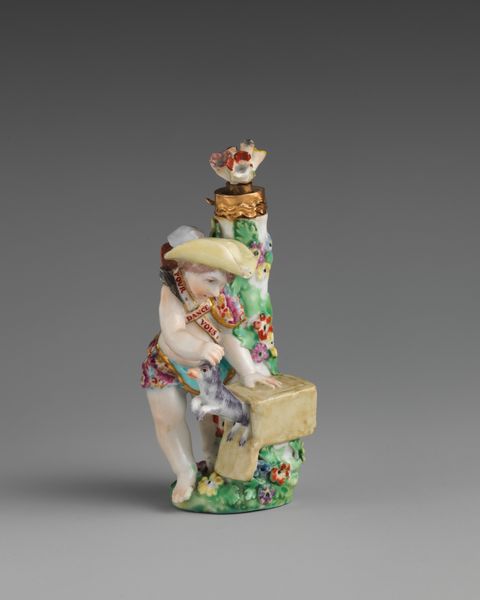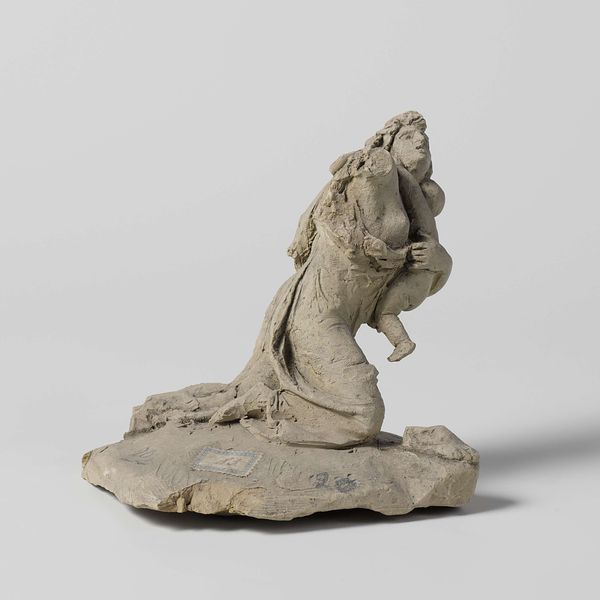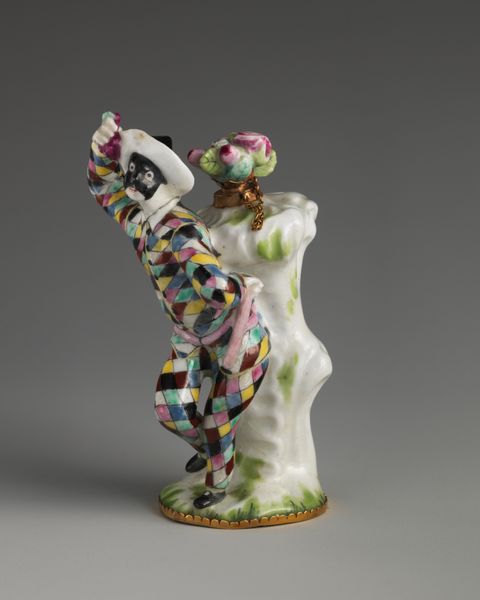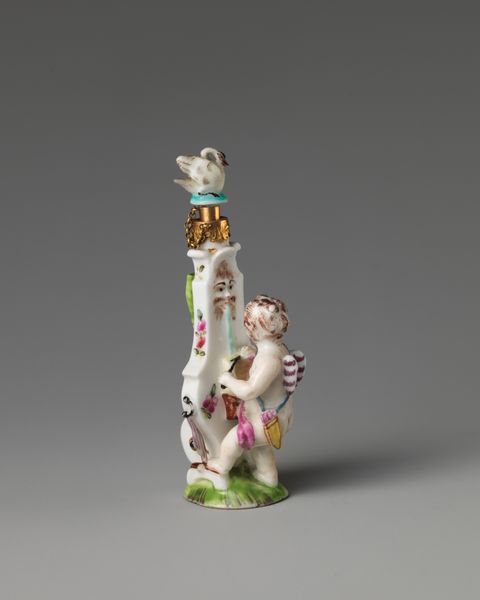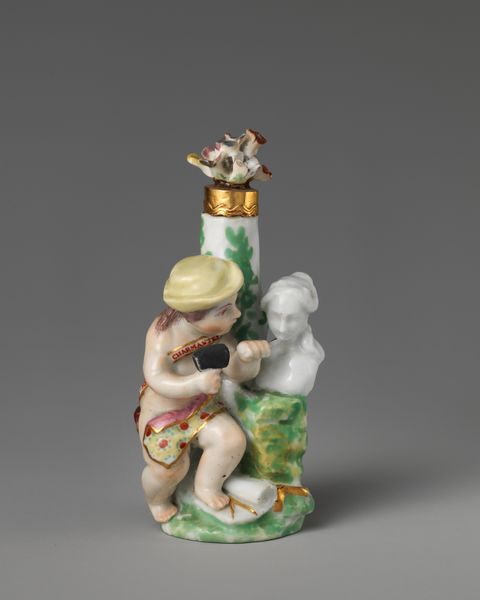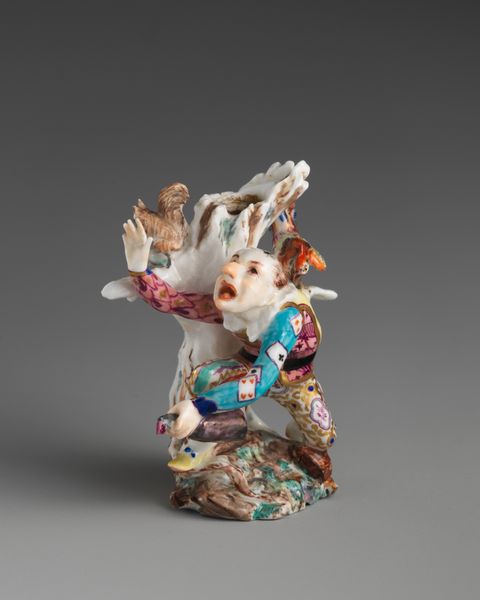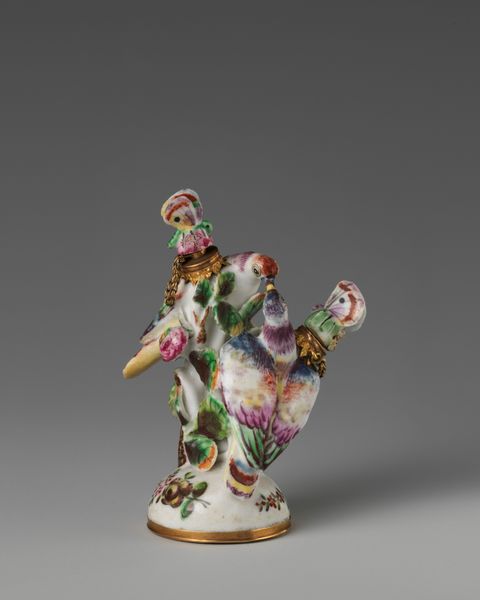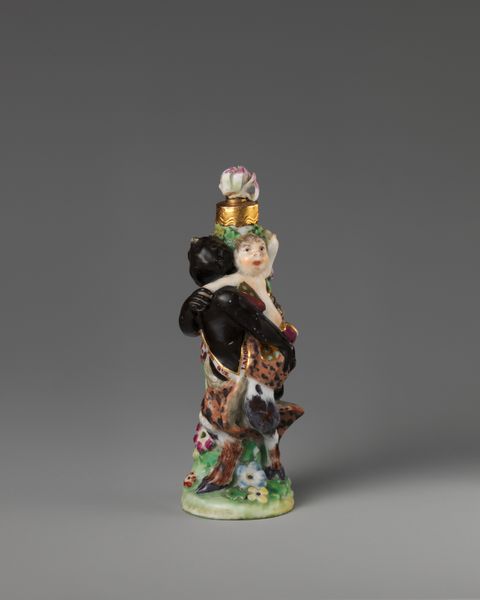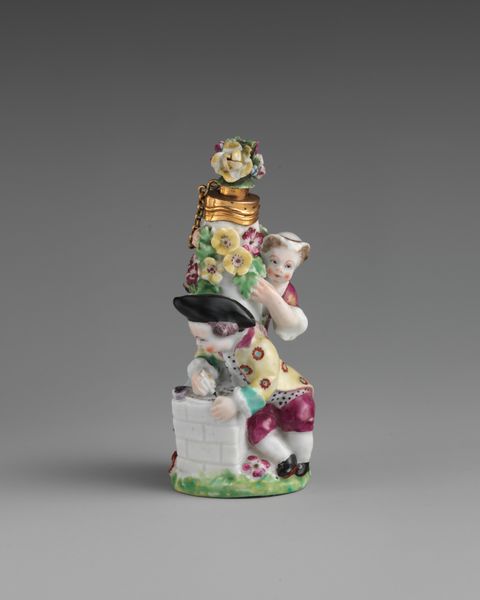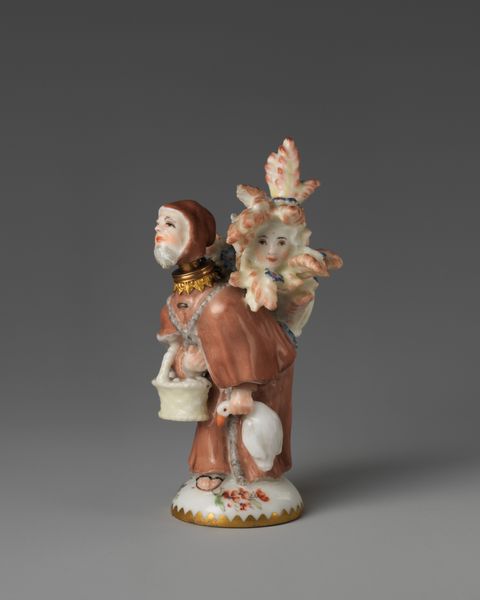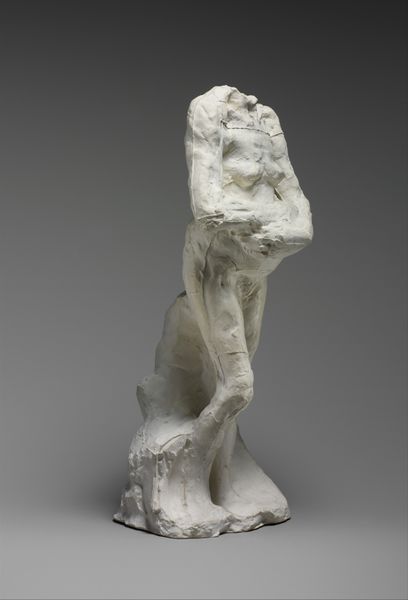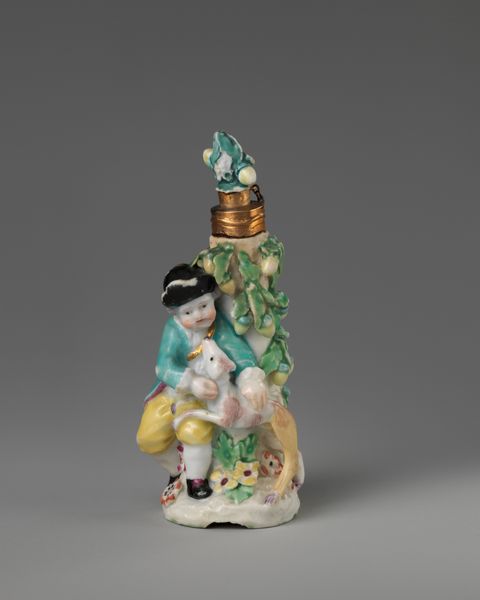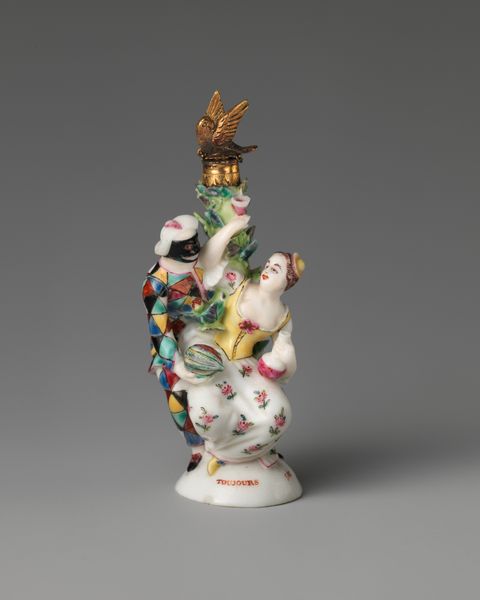
ceramic, porcelain, sculpture
#
ceramic
#
fantasy-art
#
porcelain
#
figuration
#
sculpture
#
decorative-art
#
rococo
Dimensions: Height: 7 1/16 in. (17.9 cm)
Copyright: Public Domain
Curator: This intriguing porcelain sculpture, created around 1735-1745, is titled "Satyr." Editor: The piece exudes an odd, restless energy; the pale figure lunging forward on that textured base creates an immediate sense of unease. Curator: Indeed. The satyr figure itself—note the horns, the animalistic features—has long been a potent symbol within art, literature, and theatre. Historically, satyrs represent a tension between man and beast, reason and instinct, often linked to masculine excess and untamed sexuality. This particular representation highlights a cultural fascination during the Rococo period with mythological narratives infused with playful and often provocative themes. Editor: Right, but let's dig a bit deeper into this specific iteration. The pure white porcelain immediately reads as “purity,” almost a caricature of itself when juxtaposed against the implied lewdness of the satyr. The artist’s choice subverts that historical reading through color and even texture; what symbolic traditions do we see playing out? Is there, perhaps, an exploration of internal conflict and an examination of moral tensions represented by color choice and surface characteristics? Curator: That’s an astute observation. It reminds me of debates concerning purity and corruption within artistic representations of idealized masculinity, especially relevant given the historical constraints surrounding gender and sexuality at that time. By portraying a traditionally libidinous figure in delicate porcelain, perhaps the artist seeks to critique and reimagine accepted roles of masculinity. The contrast serves not to neutralize but amplify the tension inherent within those constructs. Editor: Looking closer, the gnarled and rugged base amplifies the satyr’s character even more; these stylistic choices speak of a deeper visual conversation. It suggests how potent visual contradictions contribute to narrative richness and, in the process, redefine the historical interpretations. Curator: This reimagining forces us to question prevailing perspectives on power and desire; that interplay of traditional motifs and challenging interpretations of sexual and societal dynamics serves to question the roles within society itself. Editor: Overall, “Satyr” invites us to ponder the complex and interwoven interpretations behind historical and modern-day art. Curator: It becomes clear that the statue provides not just an artwork of artistic style but one ripe with social commentary to reinterpret historical interpretations in the process.
Comments
No comments
Be the first to comment and join the conversation on the ultimate creative platform.
